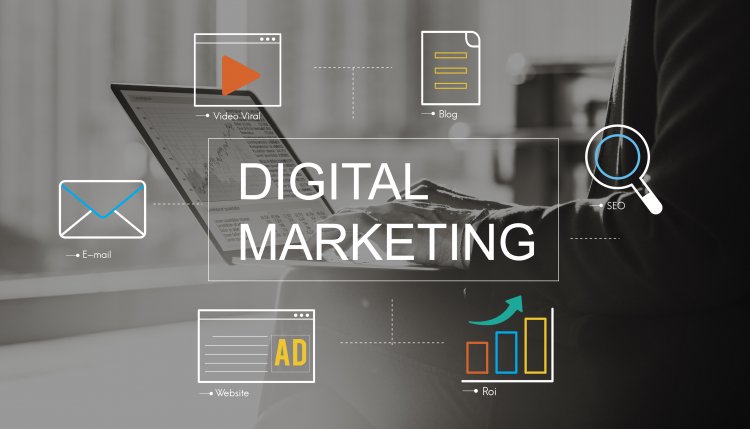In this article, we’ll provide you with an overview of how to grow a small business using modern-day digital marketing strategies.
Small businesses have a unique opportunity when it comes to digital marketing. They can be more agile and creative with their campaigns since they don’t have the same bureaucratic hurdles as larger businesses. Additionally, small businesses can connect more easily with customers on a personal level, fostering loyalty that larger businesses often cannot match. Here are ten tips for small businesses looking to improve their digital marketing efforts.
1. Experiment with content
Small businesses can often get away with more testing and experimenting than larger enterprises because the stakes are lower. Since small business needs are often more niche than those of larger businesses, they can find success by simply focusing on fewer channels and getting more granular with their targeting.
For example, if you’re running a diagnostic medical centre, there’s probably little point in trying to advertise on a channel like Facebook that caters largely to consumers. A better bet might be LinkedIn or Google, both of which have a more professional audience.
2. Leverage the power of social media
Social media is “uniquely powerful for small businesses.” Social media also allows entrepreneurs to get instant feedback on new ideas and products, which helps them adjust their course quickly. Additionally, social media is a great way to attract attention from larger companies that might be interested in acquiring or partnering with your business.
The best social media platforms for small businesses are the ones that align with the company’s specific needs and goals. For example, a real estate agent hoping to generate leads might find that Facebook works well, while a photography studio hoping to sell prints might do better on Pinterest or Instagram.
3. Use the right tools
Small businesses should take advantage of automation tools like marketing automation software to free up resources and make data-driven decisions. These tools can be particularly helpful for small businesses that lack the resources and expertise to use more sophisticated analytic tools.
Other tools that can help small businesses are email marketing platforms, customer relationship management tools, content management systems, and social media publishing tools.
4. Focus on the customer
Small businesses live and die by their customers, so they should focus more strategically on building relationships with them. The most successful small businesses and startups used digital marketing to build meaningful customer relationships. Social media, in particular, is a great way for small businesses to communicate with their customers and nurture those relationships.
Another way to do this is by using a great email marketing tool. You can collect customer information and then send targeted emails based on their interests, demographics, and more.
5. Be consistent
Consistency is the name of the game for small businesses in digital marketing. Small businesses should find a handful of channels that are the best fit for their product or service and then focus on developing unique content for those channels. “Digital marketing is essential for small businesses, but it must be applied consistently across channels” to be effective truly.
For example, you might create a well-known blog for its home renovation tips and then expand to Pinterest, Facebook, Twitter, LinkedIn, Instagram, Google+, or YouTube. The key is being consistent with each channel while still maintaining the overall theme of the business.
6. Optimize your site for SEO
SEO is still a major priority for small businesses. Since Google is the most popular search engine, it’s important to ensure your site comes up high in results when people search for your product or service.
The best way to do this is to start building backlinks early on. These are links that point to your site from other sites. The more high-quality, relevant sites you can link to your own, the higher your page will rank in Google search results.
7. Work on building an email list
Email marketing is still one of the most effective ways for small businesses to connect with their customers and prospects. By building an email list, you can stay in contact with your customers and keep them informed about new products, promotions, and even the behind-the-scenes happenings at your company.
To ensure email marketing success, it’s important to have a great email marketing tool. You can create an offer or a special promotion and then send it out as an email blast. Plus, if your customer signs up for the mailing list on your website through your email marketing tool, they will be automatically added to that list.
8. Measure your results
As any digital marketing expert will tell you, the only way to know whether your strategy is working is through hard data. Small businesses should follow a strict process for measuring and quantifying their results.
The most important metrics to track are leads generated, conversions (how many people signed up for your product or service), and the cost per conversion.
Small businesses should also pay close attention to what channels produce the best results. For example, you could see that Facebook brings in more leads than Twitter, so you might focus more of your efforts on Facebook moving forward.
9. Simplify payment methods for customers
Small businesses should make it easy for their customers to pay. Research shows that most consumers are not willing to spend more than 5 minutes on a website or landing page before deciding to purchase a product or service, so you should focus on making the checkout process as quick and easy as possible.
The easiest way to do this is by accepting all major credit cards directly through your website. You can choose to accept other payment methods, but these tend to be more complicated and can lead to a loss in sales.
Consider the example below for those accepting payments as a personal trainer:
Personal trainers are usually paid per session, but that doesn’t necessarily mean you have to stop accepting payment methods like cash or check. In fact, there are quite a few reasons why personal trainers should accept payments in other forms as well.
For starters, it’s easier for customers to pay with cash if they don’t have a credit card available. Moreover, some customers might not want their spouses or family members to see the charges on their credit card statements.
Finally, people who live paycheck-to-paycheck might prefer paying with cash so they can more easily track what they spend money on each week. The best way to know how your customer wants to handle payments is just to ask them! If you’re worried about under-charging someone, don’t be afraid to talk it out with them.
10. Experiment with paid advertising
Paid ads such as those on Google and Facebook can be a great way for small businesses to gain exposure and new customers. Paid ads are an effective means of reaching a specific target audience, which is why retailers often use them.
To ensure success, paid ads should be integrated into a broader digital marketing strategy. This means using organic social media posts or content when possible and including in-person touchpoints like events and seminars.
The tips cited in this article are useful to small business owners who want to improve their digital marketing efforts. Small businesses should experiment with different channels and get more granular with their targeting. They can use social media to attract attention from larger companies and automate their marketing efforts with tools like marketing automation software. Finally, small businesses should focus on building meaningful customer relationships.

















